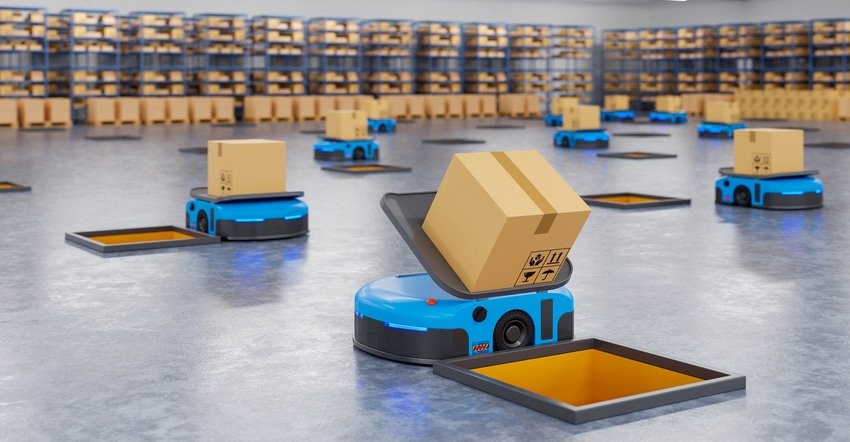Time for On-the-Go Charging for Mobile Robots
The robot charging process that regularly puts the machine out of commission is becoming untenable in factories and warehouses. A solution is on the way.
October 5, 2023

Mor Peretz, CEO and co-founder of CaPow
Warehouses are often fraught with physical hazards, demanding operational challenges, and enormous time pressure. Unsurprisingly, many warehouse employees are finding the environment increasingly taxing and overbearing. Indeed, much of the manual workforce has had enough, leaving 86% of warehousing companies in a severe labor bind.
To overcome these challenges, many warehouses have turned to automated fleets of mobile robot systems – solutions that bolster human safety while enhancing the flexibility and scalability of order fulfillment.
Take Walmart, for example. The retail giant plans to automate every one of its regional distribution centers and do the same with two-thirds of its storefronts in three years – a move estimated to increase revenue by 4% year over year. Amazon and Ocado are following suit.
Cost of Space and Downtime
But robots can only go as far as their energy capabilities allow them to. The reality is they are only as good as their energy capacities, and at the moment, the warehouse industry’s static charging infrastructure is actually hindering growth.
Robots can’t operate indefinitely without recharging. But to recharge – which can take anywhere from twelve minutes to several hours – they must remain idle, and every second a robot spends charging is valuable time it can’t spend operating.
This downtime is not only cumbersome for warehouse operators, but the real estate needed to accommodate static charging stations is costly as well, with warehouse space being a rare resource to begin with and rent prices expected to increase over 10% this year alone. Every square inch that charging stations take up could be used to store products or facilitate machinery.
To overcome downtime, warehouse operators augment their automated fleets, but just one mobile robot can cost upwards of tens of thousands of dollars, leading to a never-ending spiral of increased spending and additional logistical challenges. Not to mention the exorbitant initial entry cost to form a fleet.
Between its spatial requirements and downtime workarounds, the use of static charging for warehouse robots has inherent flaws. To add to this, it is neither cost-effective nor ideal for warehouse operators trying to scale and streamline operations.
Charging Solutions
Warehouse operators need to seek power delivery solutions that help warehouse automation reach a whole new level of productive capacity.
One method is opportunistic charging, which entails charging a battery for short periods throughout the day as opposed to recharging the battery all at once. In a warehouse that operates multiple shifts and lacks a regular, designated period for battery charging, opportunistic charging presents an optimal approach to maximizing equipment uptime.
To take this a step further, an innovative opportunistic charging solution showing promising potential is dynamic power delivery, an on-the-go concept that involves charging mobile robots while they are in motion.
This type of charging infrastructure allows mobile robots to remain continuously operational, giving warehouses the capacity to function non-stop without having to endure the downtime of static charging. In this way, warehouse operators can avoid augmenting robotic fleets to compensate for lost time and can repurpose the space that would normally be reserved for charging stations to store more inventory.
These are just two examples of practical alternatives – indeed, material science advancements will continue paving the way for stronger, more convenient charging solutions for warehouses.
Charging Ahead
Although mobile robot fleets are key to overcoming the limitations of static charging, they need to be accompanied by efficient power delivery if the warehouse industry hopes to reach its full productive potential and maximize revenue.
Enabling batteries to charge continuously without interfering with the robot’s assignments helps warehouses keep up with rising e-commerce demands while saving money.
With even more solutions on the horizon, warehouse operators can charge ahead of the competition. After all, increasing a warehouse's automated capabilities increases its profitability and operational possibilities.
You May Also Like

.jpg?width=300&auto=webp&quality=80&disable=upscale)

